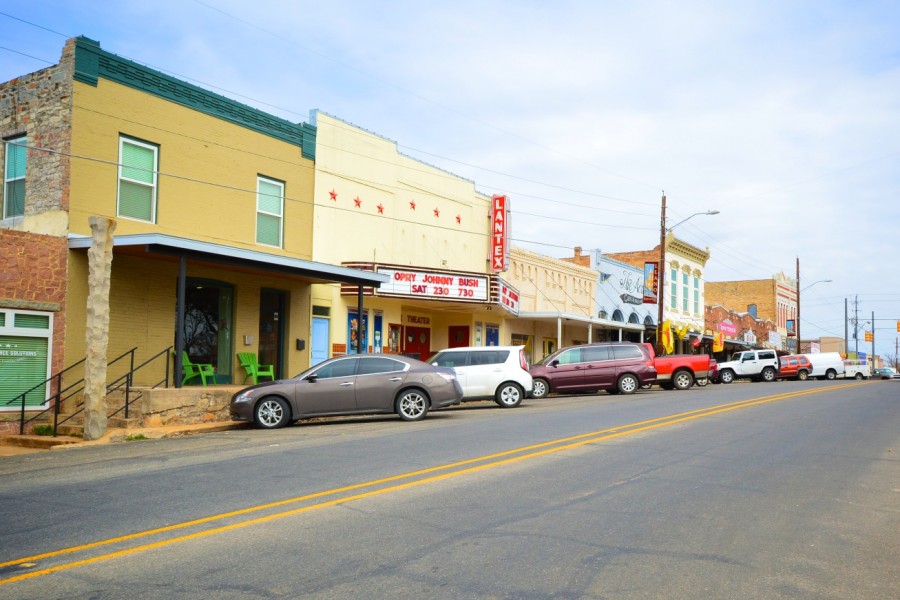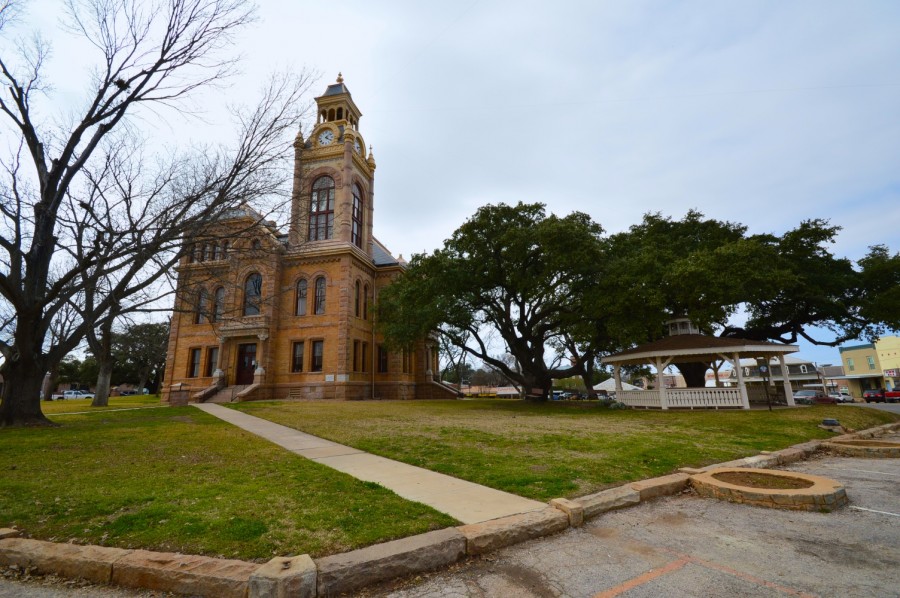The back story of our neighbor to the Southeast, Llano, is filled with tales of American Indians, early European settlers aided by Germans, boom periods in search of iron deposits in nearby mountains and downtown town fires so frequent, the town was denied fire insurance for a number of years by insurers.
This small Texas town boasts big Texas heritage, from their bustling antique shops downtown to their pride of the area, Cooper’s Old Time Pit Bar-B-Que — when you come to Llano you don’t leave empty handed (or hungry).
Just 20 miles west of another Highland Lake, Lake Buchanan, and 70 miles northwest from downtown Austin, Llano is humble on the surface. But don’t be fooled; this quiet Texas town packs a hefty historical punch.
You can tour some of the old buildings in nostalgic downtown Llano, where antique shops, museums, a theater and coffee shops line the square. The old Llano County Courthouse stands proud in the center of the diamond, surrounded by statuesque war memorials and an idyllic gazebo under shade trees.
To get the best experience out of this Hill Country town, come early and take a walking tour of downtown. There you’ll find the Llano County Museum, Hill Country Wildlife Museum and the Railroad Museum, complete with antique traveler trains. Many of the oldest looking buildings are over one hundred years old and counting — the town spends copious hours rebuilding and renovating rooms in disrepair, turning them into some of the most beneficial businesses in the area. Like the old Bruhl Drugstore building, which was turned into the Llano County Museum and is a gem run by locals of the town.
A state legislative act in 1856 would establish the spot that would become Llano. By 1870 the town was still little more than a frontier trade town, harboring a small handful of log cabins and businesses in the area.
A courthouse was constructed in 1885, an ornate structure that would serve as a beaming example of the growing industry in the area. Unfortunately on January 22, 1892 a huge fire tore through the judicial building, leaving it in ashes. A new courthouse was built in subsequent years in 1893. Boom periods before the turn of the century led to many of these early foundations and great growth spurts from 1886-1893.
Early Settlers on the River
Before the town of Llano was even a thought in the minds of legislators, it was inhabited by people indigenous to the area, namely the Tonkawa, Apache and Comanche Indians. Early Europeans from Spain arrived in central Texas to discover the vast and uncharted lands of the Americas, such as Alvar Nunez Cabeza De Vaca, who explored in the Llano area in 1535.
The land, verified Indian territory as wild as it was beautiful, was settled in the 1880s by a wave of European settlers known as the Adelsverein, a group of German nobleman organized to aid emigration to Texas. In 1845 a treaty was signed between the settlers and the Comanches to free up land for settlement, paving the way for the handful of boom years that followed.
Iron, Minerals and Granite Under Our Feet
As transportation and infrastructure was improved over the years, many businesses decided to call Llano home. Big money from Dallas and the northern states began making their way down to the Hill Country, setting up foundries and factories in town to aid in the search of granite, talc, iron and other minerals native to the area.
It was a profitable period starting in 1886 and culminating in their peak year of 1892 with the building of Austin and Northwestern Railroad. The river was bridged and the town was officially incorporated.
Oh, and the story about all of the town fires? At the tail end of the boom several downtown businesses were burned to the ground, possibly in hopes that they could cash in on the insurance policy. This led to insurance being denied to the town for a number of years.
Antique Your Way Through Llano
But while industry was drawn to the area for granite and other raw minerals, tourists and shoppers these days are drawn to Llano’s bustling antique scene, which never disappoints.
Downtown and just outside of the square is a colorful collection of carefully curated vintage and antique shops, ranging in styles from Victorian to American Western, from farm digs from the 1800s to hand stitched vintage quilts that hark back to a simpler era. Llano holds onto these pieces and stores them for sale later — expect to find all sorts of amazing goods like reclaimed wood chairs, iron yard art and even handmade items.
The last time I went on an antiquing spree I walked away with a vintage iron heart basket, 1940s style font letters and several one-of-a-kind cards that just kept calling my name. Stores like Whimseys Antiques and Across the Street Antiques harbor a vast collection of curated goods available for purchase, so bring your cash and truck if you have it (just in case).
Take a scenic drive out to this historic Texas town and experience all of the adventure, amazing shopping and great food you can handle.
Llano, Texas (map)

